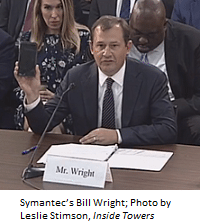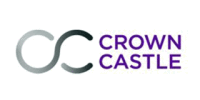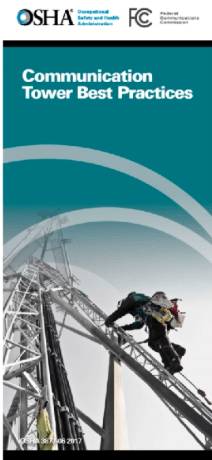Senators Ed Markey (D-MA) and Lamar
Alexander (R-TN) introduced a bill this week to ban passengers from
using their cell phones for voice calls on commercial flights. Texting
would be allowed under the Commercial Flight Courtesy Act, should it pass.
“Passengers chatting on their mobile
devices in the small confines of an airplane could make flying even less
comfortable,” said Sen. Markey in the announcement.
“Passengers should not have to suffer through the conversations of
others, and flight crews should not be disrupted while performing their
important safety and security duties.”
“Stop and think about what we hear
now in airport lobbies from those who wander around shouting personal
details into their phones: babbling about next week’s schedule, orders
to an assistant, or arguments with spouses,” said Sen. Alexander. “Now
imagine nearly two million passengers, hurtling through space yapping
their innermost thoughts while you travel restrained by your seatbelt
and unable to escape. Keeping phone conversations off commercial flights
may not be enshrined in the Constitution, but surely it is enshrined in
common sense.” Continue Reading
Friday, June 30, 2017
Thursday, June 29, 2017
NCAI Seek Expense Relief for Tribal Land Carriers
The National Congress of American
Indians is urging the FCC to vote on a draft order giving carriers
serving Tribal lands more flexibility in recovering operating expenses
for deploying broadband; the order has sat for more than four months,
according to NCAI President Brian Cladoosby.
The delay is jeopardizing the financial viability of a number of carriers seeking to serve Tribal lands, the least-served in the country, writes Cladoosby in a letter filed this week. “We need to take this initial step to remove the harm that is being caused by the operating expense limitation rule.”
Specifically, the group seeks to exempt carriers primarily serving Tribal lands from the operating expense limitation rule. “A number of carriers submitted evidence of higher operating expenses associated with deploying broadband on Tribal lands,” he tells the agency. “Not a single commenter” filed to oppose the change, he adds. Continue Reading
The delay is jeopardizing the financial viability of a number of carriers seeking to serve Tribal lands, the least-served in the country, writes Cladoosby in a letter filed this week. “We need to take this initial step to remove the harm that is being caused by the operating expense limitation rule.”
Specifically, the group seeks to exempt carriers primarily serving Tribal lands from the operating expense limitation rule. “A number of carriers submitted evidence of higher operating expenses associated with deploying broadband on Tribal lands,” he tells the agency. “Not a single commenter” filed to oppose the change, he adds. Continue Reading
Wednesday, June 28, 2017
U.S Lags Way Behind in Broadband Deployment
Thirty four million Americans lack access to broadband and the country is ranked 16th in the world for broadband access, said U.S. Rep. Brad Schneider (D-IL), without citing a source, according to Broadbandbreakfast.com.
Speaking at a hearing last week on improving broadband deployment in
rural areas to a House Small Business Subcommittee, Schneider and others
discussed how Congress can improve broadband deployment.
Mike Romano, lobbyist for NTCA, the Rural Broadband Association, said providers don’t usually see a ROI for providing broadband in outlying areas. That’s why the FCC’s Universal Service Fund, a public-private partnership, is so important. But the USF has at times, been inefficient with a flat budget since 2011, he said, according to Broadbandbreakfast.com. Continue Reading
Mike Romano, lobbyist for NTCA, the Rural Broadband Association, said providers don’t usually see a ROI for providing broadband in outlying areas. That’s why the FCC’s Universal Service Fund, a public-private partnership, is so important. But the USF has at times, been inefficient with a flat budget since 2011, he said, according to Broadbandbreakfast.com. Continue Reading
Tuesday, June 27, 2017
Pai: ‘Dumb Pipes’ Won’t Make Cities ‘Smart’ for 5G
The FCC is questioning how state and local governments can impact the
speed and cost of broadband infrastructure deployment in order to
reform those processes. As FCC Chairman Ajit Pai explained to attendees
of a broadband seminar in Stockholm on Monday, one proposal would deem
an application is granted if not acted on within a certain time frame by
a state or local government.
The FCC is looking at its own rules too, to see what can be done to minimize costs and delays. “The bottom line is this: Rules that were designed for 100-foot towers might not make sense for small cells that you can hold in your hands,” said Pai. “And we don’t want governments to channel the grim reaper in Ingmar Bergman’s 1957 all-time classic The Seventh Seal, decreeing ‘Nothing escapes me. No one escapes me.’” Continue Reading
The FCC is looking at its own rules too, to see what can be done to minimize costs and delays. “The bottom line is this: Rules that were designed for 100-foot towers might not make sense for small cells that you can hold in your hands,” said Pai. “And we don’t want governments to channel the grim reaper in Ingmar Bergman’s 1957 all-time classic The Seventh Seal, decreeing ‘Nothing escapes me. No one escapes me.’” Continue Reading
Monday, June 26, 2017
Trump Supports Getting Muni’s to Speed Small Cell Infrastructure Siting
President Donald Trump spoke with
several executives from wireless, drone and venture capitalist firms as
part of the latest White House Tech Week. Inside Towers reported
FCC Chairman Ajit Pai was in meetings related to 5G and IoT. AT&T
CEO Randall Stephenson and Sprint CEO Marcelo Claure demonstrated 5G and
described some of the delays in getting small cell infrastructure
sited. After that, Trump suggested that his Chief Economic Adviser Gary
Cohn “write a very strong letter of recommendation” to U.S. cities
advocating easing permits for mobile cell installations, reported Politico. Continue Reading
Friday, June 23, 2017
Infrastructure Plan Includes Rural Broadband, Trump Confirms
 Wireless
stakeholders have been hoping and now President Donald Trump has
confirmed that expanded access to broadband internet service in rural
areas will be part of the $1 trillion infrastructure proposal he will
send to Congress. “You’ll be seeing it very shortly,” he said Wednesday
evening in Cedar Rapids, IA.
Wireless
stakeholders have been hoping and now President Donald Trump has
confirmed that expanded access to broadband internet service in rural
areas will be part of the $1 trillion infrastructure proposal he will
send to Congress. “You’ll be seeing it very shortly,” he said Wednesday
evening in Cedar Rapids, IA.His plan to use $200 billion in federal funds to prompt investment in national infrastructure has spurred rural groups to seek broadband inclusion, Inside Towers reported. Previous administrations ensured rural areas were electrified and received water upgrade projects to bring them in line with their suburban and urban peers, noted lawmakers at a House Communications Subcommittee hearing on rural broadband earlier this week. Their point was rural America should have access to high-speed internet too. Continue Reading
Thursday, June 22, 2017
Updating FCC Broadband Coverage Map Critical to Rural Expansion

The FCC’s National Broadband Map is outdated and updating it is key to any infrastructure package hoping to boost the nation’s high speed internet. Several witnesses speaking at a House Communications Subcommittee hearing Wednesday suggested the FCC continue to concentrate on ensuring areas that don’t have broadband at all are targeted by public and private investment rather than upgrading areas that do have some broadband service.
Subcommittee Chair Rep. Marsha Blackburn (R-TN) and full House Commerce Committee Chair Greg Walden (R-OR) said they intend to learn from past mistakes and get the map right first before distributing any federal funds. Continue Reading
Wednesday, June 21, 2017
Hasty USF Fund Changes Could Leave ‘Rusty Towers’ Across Rural America


C Spire’s Eric Graham and NTCA’s Shirley Bloomfield testified on Capitol Hill Tuesday. Photos by Leslie Stimson, Inside Towers
Ten years of flat funding in the FCC’s Mobility Fund have led to a situation of wireless carriers “robbing” from potential new rural customers in order to keep existing broadband service operating. Witnesses told lawmakers on a subcommittee of the Senate Commerce Committee on Tuesday the FCC needs to hit “pause” before going ahead with planned funding changes to re-distribute monies for rural broadband. They said the FCC needs to fix a few things first to ensure money goes where it will actually do some good.
FCC Chairman Ajit Pai has criticized the Mobility Fund, which is part of its Universal Service Fund, for “wasteful” spending of some $25 million each month to subsidize wireless carriers in areas where private capital has been spent building out networks. He wants to redirect that money to bring 4G LTE coverage to rural areas. But NTCA, The Rural Broadband Association and the Competitive Carriers Association as well as several small wireless companies have told the agency the issue isn’t that simple. Continue Reading
Tuesday, June 20, 2017
CTIA, WIA to FCC: Speed Up Historic Preservation Infrastructure Siting


CTIA and the Wireless Infrastructure Association have several suggestions how the FCC can update the National Historic Preservation Act (NHPA), so federal agencies can determine whether historic sites are present near proposed wireless infrastructure projects and, if so, whether those projects might impact important Tribal sites located on non-Tribal lands. Antiquated procedures are hindering the build-out of wireless networks, say the trade associations. The associations also cited how the FCC has historically administered NHPA, resulting in long delays and unreasonable costs.
New data indicate that Tribal review takes an average of 110 days to complete—with evidence of some reviews taking over 500. In just the last two years, application fees jumped by 30 percent and the average co-location fee increased 50 percent. To that end, CTIA and WIA suggest: Continue Reading
Monday, June 19, 2017
FCC Plans Action on FirstNet, Blue Alerts This Week
The FCC has been voting up a storm at
its public meetings since the administration change and Pai’s
appointment to Chairman; the meeting this week is no exception. The
agency will consider six telecom-related issues on Thursday. Two items
are emergency-related. One is a proposal to add a Blue Alert code to EAS to deliver actionable information when a law enforcement officer is in trouble. Blue
Alerts can be transmitted to cell phones and wireless devices,
broadcast stations, overhead highway message signs, and other secondary
alerting mechanisms – in the same way that Amber Alerts are commonly
issued. While the Commission is initially proposing to add such alerts
to EAS, it’s considering whether to add the code to Wireless Emergency Alerts too. Continue Reading
Friday, June 16, 2017
State DOT Challenges FCC“Shot Clock” Sharing Policy
The Illinois Department of
Transportation (IDOT) alerted the FCC to concerns regarding barriers to
wireless infrastructure siting at the state and local level, advising
that both industry and localities should carry the weight of issuing
timely permits, reports Law360.
FCC Chairman Ajit Pai proposed plans to ease wireless infrastructure
deployment; some local officials have expressed concern about the
potential preemption of local authority, Inside Towers has reported.
The FCC uses a “shot clock” for wireless siting applications and if a local authority goes beyond the prescribed timeline, carriers can take the issue to court, according to experts, cites Law360. Continue Reading
The FCC uses a “shot clock” for wireless siting applications and if a local authority goes beyond the prescribed timeline, carriers can take the issue to court, according to experts, cites Law360. Continue Reading
Thursday, June 15, 2017
FCC Awards Over 2,300 600 MHz Licenses
 The
FCC granted more than 2,300 licenses in the 600 MHz band to wireless
bidders; this is the broadcast television spectrum the carriers bid on
in the incentive auction. We knew how much the carriers bid on the
spectrum, a total of about $10 billion. What’s new, is how many licenses
each bidder won and the markets those licenses are for.
The
FCC granted more than 2,300 licenses in the 600 MHz band to wireless
bidders; this is the broadcast television spectrum the carriers bid on
in the incentive auction. We knew how much the carriers bid on the
spectrum, a total of about $10 billion. What’s new, is how many licenses
each bidder won and the markets those licenses are for.T-Mobile was awarded the most licenses — 1,525 according to an Inside Towers examination of the lists. T-Mobile told the FCC it may start operations or conduct testing on the band using some of its licenses later this year.
Dish Network, which bid through ParkerB.com Wireless, came in second with 487 licenses. U.S. Cellular Corporation was next with 88 licenses and AT&T was awarded 23 licenses. Docomo Pacific received six for Guam and the Northern Mariana Islands, and NEIT Services was awarded one license for Manchester, IA. Click here to read the 52 pages of licenses sorted by market. Continue Reading
Wednesday, June 14, 2017
Wireless Cyber Security Threats Real
 More
than half of mobile data traffic originates on mobile phones and that
data is becoming more vulnerable to being hacked, especially as more
devices connect to the internet. Holding up a smartphone, Symantec
lobbyist Bill Wright told members of a House Communications and
Technology Subcommittee on Tuesday “We need to start viewing these as
computers and protecting them as computers.”
More
than half of mobile data traffic originates on mobile phones and that
data is becoming more vulnerable to being hacked, especially as more
devices connect to the internet. Holding up a smartphone, Symantec
lobbyist Bill Wright told members of a House Communications and
Technology Subcommittee on Tuesday “We need to start viewing these as
computers and protecting them as computers.”Though 4G LTE is ubiquitously deployed in the U.S., vulnerabilities exist in 2G and 3G mobile networks mainly outside the U.S., said Virginia Tech Professor Dr. Charles Clancy. Public WiFi hotspots here, such as those in coffee shops or airports, are especially vulnerable to cyber threats. Continue Reading
Tuesday, June 13, 2017
‘Partners in Broadband’ Forms for Rural America
Several rural infrastructure groups
announced a joint campaign Monday to help promote collaboration and
partnerships to deploy and operate broadband networks in unserved parts
of rural America. The
“Partners in Broadband” campaign focuses on creating alliances through a
website that looks to connect those interested in delivering broadband
to unserved rural communities with nearby partners that share a
community commitment and have expertise in broadband network deployment
and operation.
NTCA–The Rural Broadband Association, the National Information Solutions Cooperative, NRTC and National Rural Utilities Cooperative Finance Corp. developed the new site, and will promote it to their customers and members, representing more than 1,500 community-based broadband and electric service providers in 49 states. Continue Reading
NTCA–The Rural Broadband Association, the National Information Solutions Cooperative, NRTC and National Rural Utilities Cooperative Finance Corp. developed the new site, and will promote it to their customers and members, representing more than 1,500 community-based broadband and electric service providers in 49 states. Continue Reading
Monday, June 12, 2017
Report Shows U.S. Lags Behind in Mobile Internet Speeds
Akamai Technologies, using its Akamai Intelligent Platform, analyzed and recently released its first quarter 2017 State of the Internet Report, which measures important metrics, like connection speeds, broadband adoption metrics and notable internet disruptions.
“Increases in connection speeds and broadband penetration have helped enable the internet to support levels of traffic that even just a few years ago would have been unimaginable,” David Belson, the editor of the report, said in a company press release. “One need only look to January’s U.S. Presidential Inauguration, which broke traffic records for live coverage of a single news event delivered by Akamai.” Continue Reading
“Increases in connection speeds and broadband penetration have helped enable the internet to support levels of traffic that even just a few years ago would have been unimaginable,” David Belson, the editor of the report, said in a company press release. “One need only look to January’s U.S. Presidential Inauguration, which broke traffic records for live coverage of a single news event delivered by Akamai.” Continue Reading
Friday, June 9, 2017
American Tower Makes Fortune 500 List
 American
Tower (NYSE: AMT), made its debut on the Fortune 500 at No. 449 with
revenues of $5.78B, profits of $956M and a total revenue increase by 21
percent over last year. American was ranked above brand name companies
like Clorox, Arthur Gallagher, Citizens Financial, Mattel, Western Union
and Yahoo, according to Fortune Magazine.
American
Tower (NYSE: AMT), made its debut on the Fortune 500 at No. 449 with
revenues of $5.78B, profits of $956M and a total revenue increase by 21
percent over last year. American was ranked above brand name companies
like Clorox, Arthur Gallagher, Citizens Financial, Mattel, Western Union
and Yahoo, according to Fortune Magazine.
Thursday, June 8, 2017
Dark, Urban Fiber is Crown’s Sweet Spot
 Though most of Crown Castle International’s
revenue (some 85 percent) comes from tall towers now, the company is
investing heavily in small cells. “I think small cells could be as big
as the tower business” is today, company President and Chief Executive
Officer Jay Brown said Wednesday at the NAREIT Investor Forum.
Though most of Crown Castle International’s
revenue (some 85 percent) comes from tall towers now, the company is
investing heavily in small cells. “I think small cells could be as big
as the tower business” is today, company President and Chief Executive
Officer Jay Brown said Wednesday at the NAREIT Investor Forum.Small cells are key to 5G deployment, where carriers need speed and less latency and can use small cells to densify their networks. “The asset we lease is fiber,” said Brown. Crown is trying to install as many antennas on distribution points as possible and use fiber to connect those points.
“The lease-up on small cells is about twice as fast” as it is for Crown’s 40,000 macro towers, according to Brown, who adds it can take only five years to lease a second tenant. Crown has 20,000 small cell nodes on-air now and 25,000 in the pipeline to be built. Thirty percent of those are additional tenants, to be co-located on existing assets. Continue Reading
Friday, June 2, 2017
FCC, OSHA Release Tower Climber Safety Guide
 UPDATE The FCC and OSHA released a new Tower Climber Safety guide. Access the 29-page document here.
UPDATE The FCC and OSHA released a new Tower Climber Safety guide. Access the 29-page document here.“As more Americans use mobile devices to call, text and stream content, the safety of workers who maintain and construct communications towers is more critical than ever,” said FCC Chairman Ajit Pai and Assistant Deputy Secretary for Labor for Occupational Safety and Health Dorothy Dougherty in a joint statement. “Every day, communications tower workers face potential hazards that can be deadly if not performed safely, and dozens of fatalities have occurred over the past few years. Every tower climber death is preventable.” Continue Reading
Thursday, June 1, 2017
Most States Will Join FirstNet, AT&T’s Donovan Says
AT&T is working with FirstNet on
developing state plans and aims to be ready to share those with
governors for their evaluation on or around June 19. “We expect most, if
not all, states will join” the effort to deploy a nationwide first
responder communications network, says AT&T Chief Strategy Officer
and Group President of Technology and Operations John Donovan.
He told attendees of the Cowen and Company 45th Annual Technology, Media and Telecom Conference the carrier began planning for the project early in the year, so when the contract was awarded they’d be ready to move. AT&T believes it will be able to give states the opportunity to be on the carrier’s commercial network by the end of this year, rather than waiting until sometime in 2018. They’d have “preemption,” he explained, “so when all hell is breaking loose and states need to get on the network they can.” Continue Reading
He told attendees of the Cowen and Company 45th Annual Technology, Media and Telecom Conference the carrier began planning for the project early in the year, so when the contract was awarded they’d be ready to move. AT&T believes it will be able to give states the opportunity to be on the carrier’s commercial network by the end of this year, rather than waiting until sometime in 2018. They’d have “preemption,” he explained, “so when all hell is breaking loose and states need to get on the network they can.” Continue Reading
Subscribe to:
Comments (Atom)

